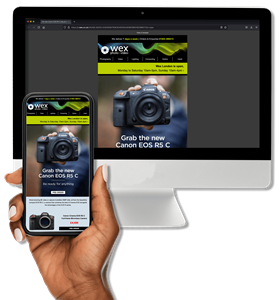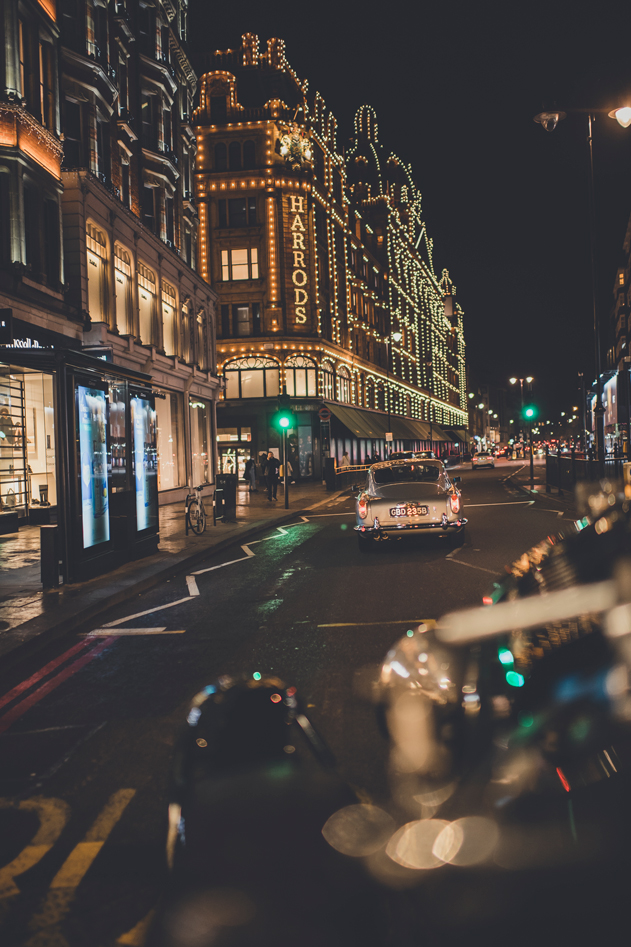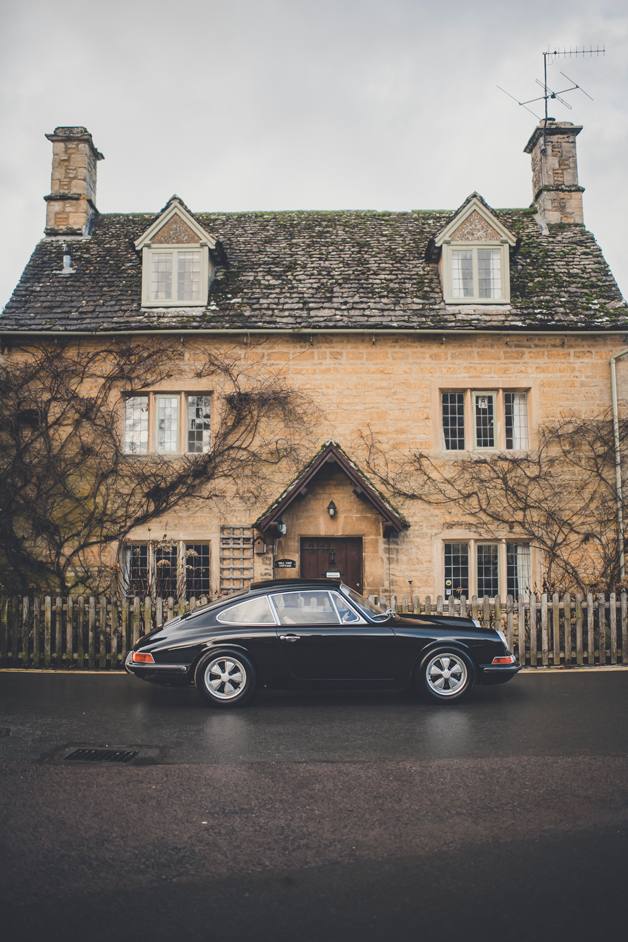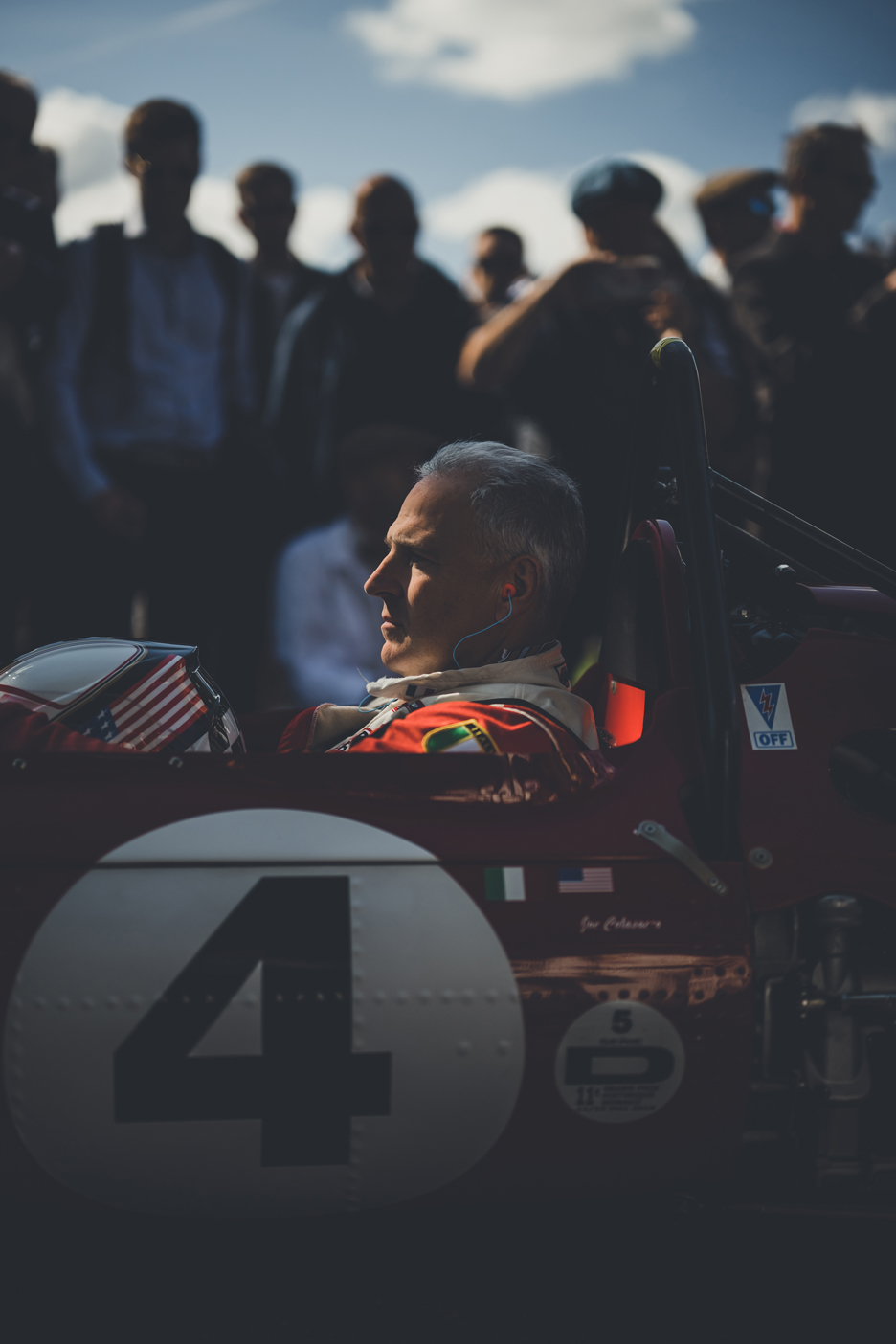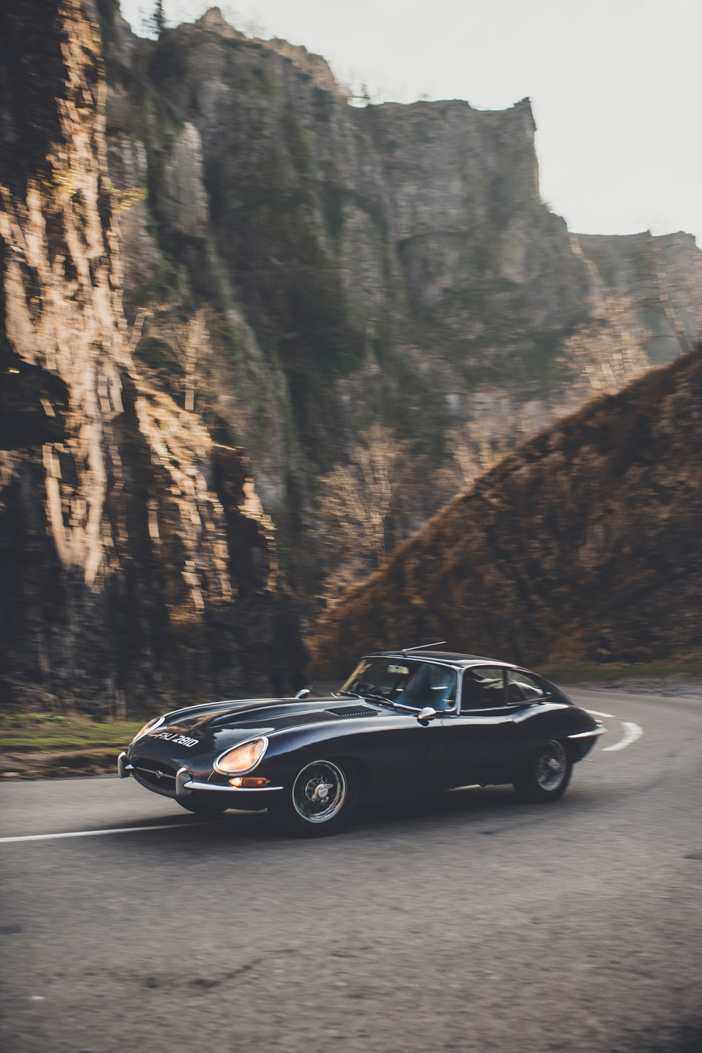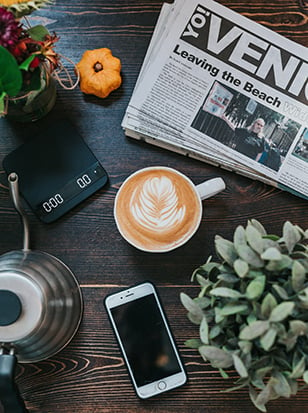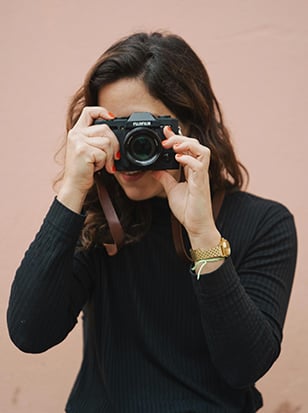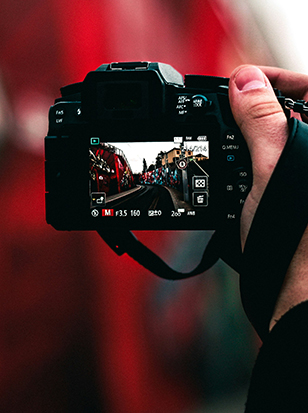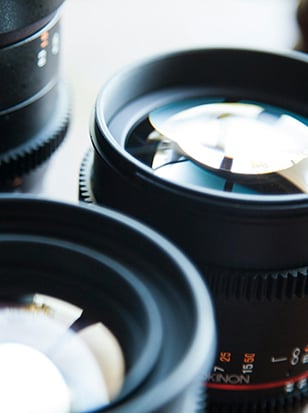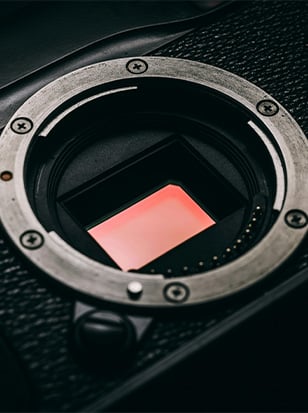
Amy Heynes (née Shore)
- Job title: Automotive Photographer
- Website: amyshorephotography.com
- Instagram: amyshorephotography
- Related jobs: Wedding photographer, book cover designer, photography assistant
It’s safe to say that Amy Shore has many a petrolhead’s dream job. As an automotive photographer, she earns a living by capturing images of some of the most classic, timeless and iconic cars in the world, which she does in a singular style that has earned her a massive following on Instagram.
Though the course of true love (between, in this case, a woman and her cars) never did run smooth, and Amy’s journey into automotive photography wasn’t exactly straightforward. She’d studied metalsmithing at university, and never even photographed a car until she was in her early twenties. But it turned out that this outsider perspective — as well as more than a little persistence — was exactly what she needed.
Read on for our edited conversation with Amy all about her journey into becoming an automotive photographer, along with her advice for anyone thinking about jumping into the field for themselves…
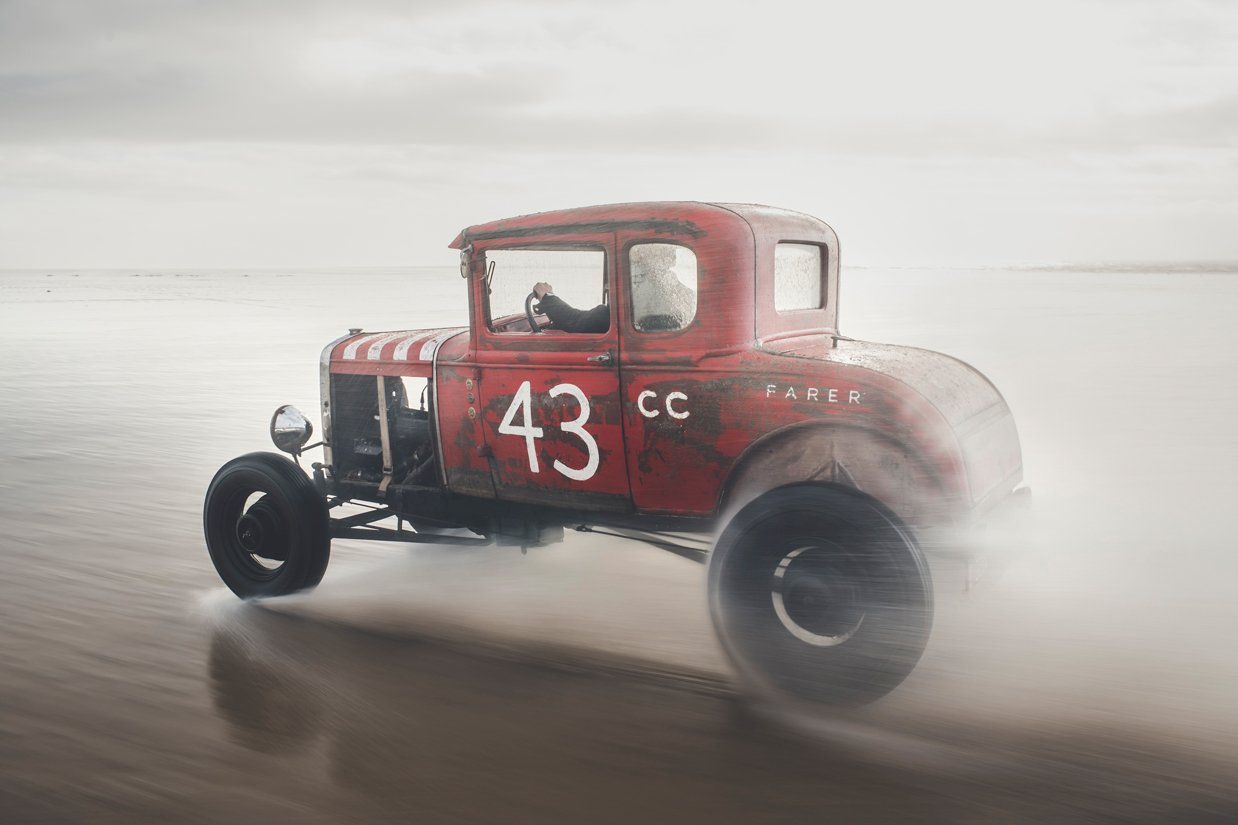
"Old Red Race Pendine" Credit: Amy Shore
Jon Stapley: Thanks for speaking with us, Amy. How did photography first enter your life?
AS: My dad always used to do photography, as a weddings-at-the-weekend hobbyist who would get paid £250 cash-in-hand. So growing up, I thought, “Oh, that’s a good way of making a bit of pocket money.” I had a camera around me, and I thought I’d have a play with it.
I'd never met a photographer, and as I started getting more interested in it, my parents would introduce me to people who were photographers. It seemed that they always had to be supported by another person or another job. So I thought maybe photography wasn't an actual, realistic job opportunity.
So I went and studied metalsmithing and silversmithing instead, thinking that’d be something I would get a job in. Absolutely not. But doing a university degree bought me time, so I didn’t have to make a decision. And then, because I was still living at home with Mum and Dad, I used my student loan to buy my first big camera and lens.
JS: What were your steps into taking photographs professionally?
AS: I was a poor graduate living with my parents, and I turned into a poor photographer living with my parents. That bit was easy.
I graduated in May 2013 from the silversmithing course — I would have been 22. I thought to myself, “Well, I don't know what I'm going to do now for money.” I was doing part-time book designing — I wasn’t a book designer either; that was something where I just said, “Yes, I can do that.” I made it up as I went along.
For the previous five years, I had already started shooting weddings at weekends, after I’d gone along with my dad initially. I’d said to him, “Dad, you're not charging anywhere near enough — you need to be charging at least five hundred quid.” He said how much he hated doing the cash talk, so I was like: “Don't worry” — confident, 18-year-old me! — “I'll do that.” So that’s what we did.
By the time I finished university, I was getting three or four weddings a year. I shot a lot of terrible weddings. Well, they weren't terrible; I was terrible. I did a lot of cheap, terrible wedding photography, but that's how I learned.
When I graduated, I'd never photographed a car at all. It was August of that year, 2013, I shot this replica Ferrari P4, and those pictures went viral online; they ended up getting picked up by Playboy magazine’s Facebook page, Jeremy Clarkson’s Facebook page… and then got into a magazine as well. Then, I shot the Goodwood Revival the month afterwards, and Goodwood saw those images, because I sent them to them.
JS: You slid into their DMs.
AS: Oh yeah. I slid into their DMs. And they found me… three months later.
Then, in the same two weeks, I shot an amazing wedding that ended up getting me loads more weddings. The people were beautiful, the venue was beautiful, and I was on point. All of it worked out well.
The way I described going from living with my parents to being, in my head, successful was that at 26, I bought my own house. And I thought, okay, for a photographer to buy my own house, on my own… I’d done all right.
JS: For the benefit of those of us who don’t know a lot about cars (hello), why exactly did the Ferrari P4 images go so viral?
AS: Basically, a Ferrari P4 is a very rare car. So the chance of them being photographed ever, especially a modern photograph — it doesn't really happen very often.
There were only four ever made; I think only three exist now. This car is not an original P4. On paper, mathematically, it is. It's built from a 1/1000th measurement of an original one… which they blew back up and built so it looked identical to a P4, a perfect replica. There just haven't been very many photographs of these types of cars, so if you’re a car nut, you’re like, “Oh my god.”
I photograph in a different way to what I still see a lot of automotive photography is. It’s often very, very dynamic, very aggressive, very exciting — but I shot it with the experience I had of wedding photography. I shot this car like I would shoot a wedding. I edited it like that, I graded it like that.
I used a very low depth of field. I wasn't in the automotive world so I had nothing to compare it to, but I'd never seen a car shot like that before. There probably were people shooting like me, but I didn't see them. I've been told that I was one of the earliest people to photograph cars in that way, but I can't guarantee that.
I talk about it as car photography through rose-tinted glasses, or through a romanticised way of looking at the world. Which is exactly how I photograph now. I don't get hired for the big, scary commercial stuff, because it's not me.
JS: Once things started picking up, how did you market yourself?
AS: Instagram. I think February 2014 is the earliest post I can scroll back to. At the time, all the algorithms were on your side. If I posted a picture of a car, people saw it, people shared it, then car magazines and big Instagram pages would end up seeing it, and people with loads more followers than I had at the time would share it. So on and so forth
From the P4 images, I got two major clients, and those two clients both had quite massive followings at the time themselves. They would send me on car shoots, meaning I had content to start posting about cars, and that’s what I did. I posted cars and weddings initially, and then realised that the cars were more exciting and did better online.
So in terms of marketing. It was social media. I don't think you could do that now, which is a real shame. I shall be honest — I wouldn't know how to market myself now. TikTok? Doing a stupid trend? As a professional, that’s not me.
JS: Once things were rolling, did you find you had goals and milestones you wanted to hit? Or was it more going with the flow?
AS: It was definitely going with the flow. Mainly because my first goal, I suppose, was to be a photographer professionally and actually earn money. I did that pretty quick. And then it was: well, what about if I had enough money to buy myself a house? And then: oh my God, I bought a house.
A goal that I didn't know I had, and I was really excited when I got it, was being on the cover of Octane Magazine, because that was the first magazine that I’d ever approached to work with. Initially they’d turned me down — quite rightly — because I wasn't good enough for them. I'd only shot one car. I didn't really know what I was doing. So when I got onto the cover of that, it was so exciting to see it on the shelf in Sainsbury’s.
If I think about goals now, I suppose the quite sad goal I have is that I just want to keep doing what I'm doing.
JS: Something I think a lot of people do still find difficult, even when they are professionals, is the money conversation. It sounds like from your experience with your dad, that this is something you've always found quite easy?
AS: I find it easier over email… If I do it on the phone, I have to take a deep breath. I’ve got a second business that my husband runs, a classic Jaguar workshop, and I know from putting my headspace in that business that if some photographer said to us, “My day rate is £1,000, plus VAT and travel,” we’d be like: “Ooh, that’s steep.” But that’s what my day rate is for general editorial.
If I really want to do the job, or I really like the people, or I know they’ve not got the cash, I find it difficult because I’m emotionally torn. Am I going to scare them away by giving them a full day rate?
There have been a couple of times I’ve got on a job, and they’ve said yes to the full day rate, and I’ve realised they’re a one-man band in a shed. I‘ve thought, no way can I charge that person this much, so I’ve given them discounts afterwards. From having the workshop, I feel the pain of starting a small business, so I try my hardest to help. That’s why I’m a terrible businesswoman!
JS: I think the inverse happens too. It probably does for you with larger car companies — when you give someone the full day rate, and they say yes without blinking, and you think, “Hmm, I could have doubled that, couldn't I?”
AS: Yep. With commercial stuff, I had no idea what to charge. So now, I’m with an agency just for commercial work. All I do is go to them and say, “This person wants to hire me commercially. There you go.” They take a cut, but they also charge me out for way more than I would have dared charge myself. It makes sense for me.
The money thing is difficult. You do have to be confident. But the confidence is built over years.
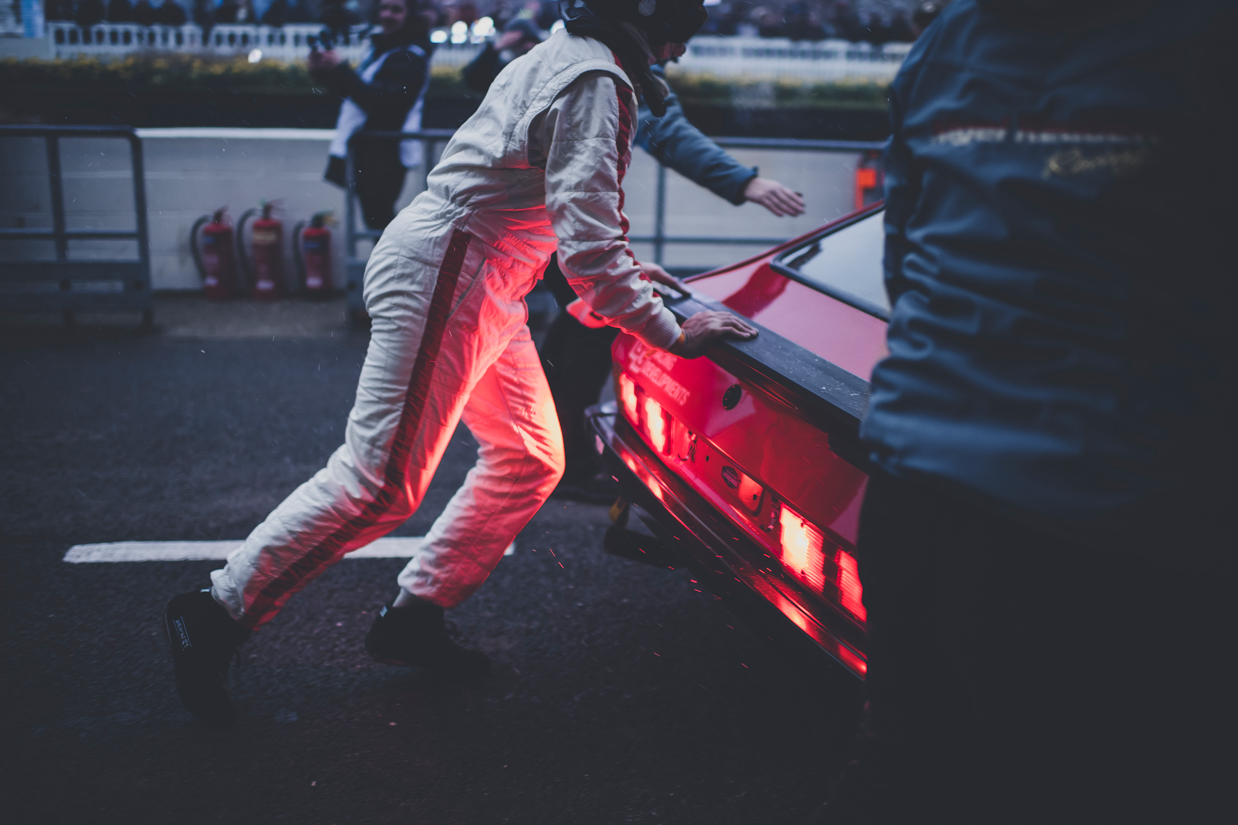
"Pit and push" Credit: Amy Shore
JS: Over your career, are there things you’re proudest of, or you think are most significant?
AS: Being asked to be a Nikon ambassador was a really, really awesome thing for me. It was 2017 — I think I was the youngest ambassador they’d ever had at that point. To have a camera company with maybe millions of customers and photographers that they could possibly have chosen… that was a huge, huge thing for me.
JS: Finally, have there been any lessons you've learned over your career that were unexpected, or that you feel like are things no-one tells you when you start out?
AS: I find that if you try to follow the rules of certain things too much, you're just going to create the same things everybody else has ever created. When I do photography talks, I talk about a chap called Joshua Paul, who is an incredible photographer. He photographs Formula 1 on a camera that's 120 years old, something that's never normally photographing such a fast sport. I say to people, if he had just what he’d shot on the same gear, with the same lenses as everybody else has ever shot, you're not going to have anything new.
When I first started out, people would have said for me that for car photography, you've got to have the car in focus from front to back. What do you mean you're shooting a car at F1.2?! So I don't think there are any rules that you need to follow or anything like that. It's more you just learn how to take shots.
Limits force creativity. If you're struggling to be creative, limit yourself and see what you produce. For me, I find that the less I have, the more I've got to figure it out.
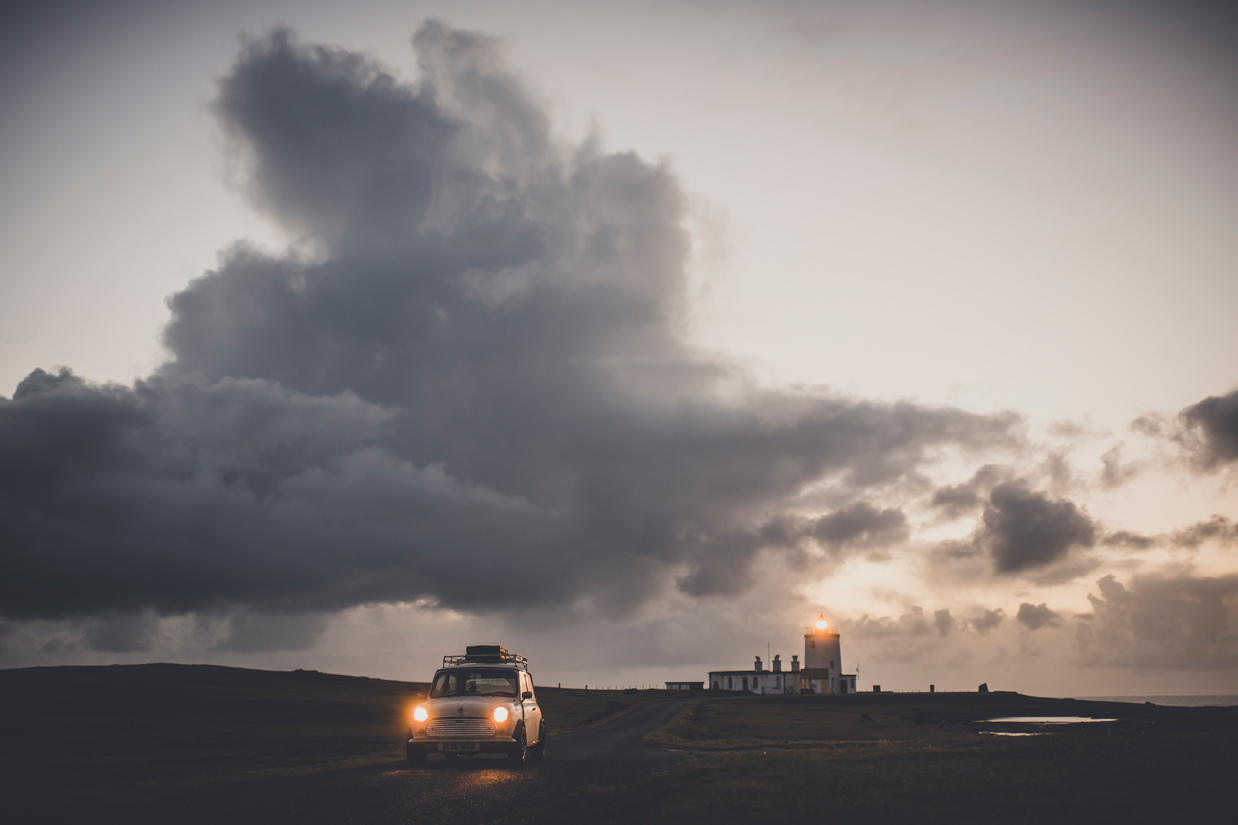
"Mini Cooper in the Shetlands" Credit: Amy Shore
About the Author
Jon Stapley is a London-based freelance writer and journalist who covers photography, art and technology. When not writing about cameras, Jon is a keen photographer who captures the world using his Olympus XA2. His creativity extends to works of fiction and other creative writing, all of which can be found on his website www.jonstapley.com
The Wex Blog
Sign up for our newsletter today!
- Subscribe for exclusive discounts and special offers
- Receive our monthly content roundups
- Get the latest news and know-how from our experts
